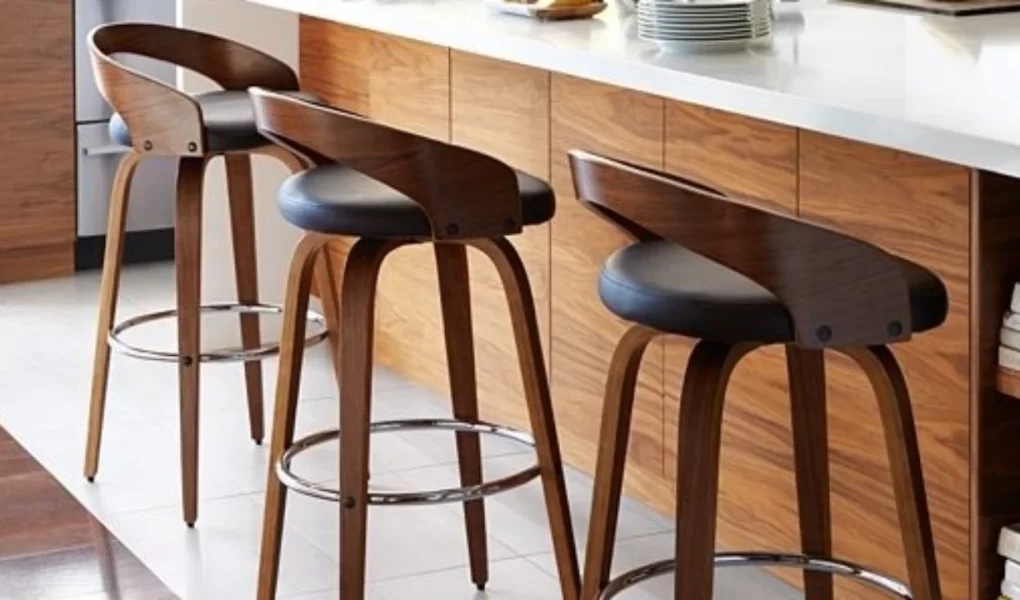Understanding the differences between bar and regular stools can greatly enhance your space. Both types of seating have unique features that cater to specific needs.
Bar stools are designed for higher surfaces, making them ideal for countertops or pub tables. They often come with footrests and back support, adding comfort during extended use. On the other hand, traditional stools offer versatility across various settings. They’re lower in height and easier to move around.
Design also plays a significant role in distinguishing these two options. Bar stools usually exhibit sleek designs with more modern aesthetics, while stools may lean towards classic styles that suit different themes.
Materials also vary; bar stools frequently incorporate metal or wood with cushioned seats for added comfort, whereas standard stools might focus on sturdier materials like plastic or solid wood without extra padding.
When selecting seating for your home or business, consider the practical uses each type serves. Bar stools will be an excellent fit if you entertain guests frequently at a high table or kitchen island. Alternatively, traditional stools could serve you better if you’re looking for flexible seating options throughout your living area or patio space.
The basics: defining bar stool and stool

At first glance, bar stools and stools are similar. Both serve as elevated seating options, but they cater to different needs.
A bar stool is typically taller than a standard stool. Designed for counters or bars, these seats often range from 28 to 32 inches in height. They provide a comfortable perch at high tables and kitchen islands.
On the other hand, a regular stool usually sits lower—around 18 to 24 inches high. It’s versatile enough for various settings like dining rooms or casual workspaces.
Bar stools often come with features such as footrests and swivel capabilities. Regular stools are simpler in design without those added functionalities.
History of bar stools and stools
Bar stools and stools have a rich history that dates back centuries. Stools were among the earliest forms of seating, used by various cultures for their simplicity and versatility. Ancient Egyptians crafted wooden versions, often adorned with intricate designs.
As societies evolved, so did the stool’s design. In medieval Europe, they became staples in homes and taverns alike. Their basic structure allowed for easy transport and storage.
Bar stools emerged later, primarily linked to pubs and bars during the 19th century. These higher seats catered to patrons enjoying drinks at elevated counters or tables. The rise of social drinking cultures led to stylish variations in design.
Design differences between bar stools and stools

Bar stools typically have taller frames ranging from 28 to 32 inches. This makes them perfect for counters or bar tables. They usually feature footrests for added comfort.
Stools, however, are generally shorter and more versatile in design. Standard stool heights vary between 18 to 24 inches, making them suitable for dining tables or casual seating.
Another key difference lies in back support. Many bar stools come with backs that provide extra comfort during extended sitting sessions. Stools may be backless or designed with minimalistic support.
The style also varies significantly; bar stools often embrace sleek modern aesthetics, while traditional stools can appear more rustic or eclectic. Both serve unique purposes while enhancing your space’s overall look.
Materials used in making bar stools and stools
Regarding materials, bar stools and regular stools offer a diverse range.
Wood is a classic choice for both types. Any space will be infused with warmth and character when it is used. From oak to walnut, the grain of wood can enhance your décor.
Metal is another popular option, particularly for modern designs. Stainless steel or wrought iron adds an industrial flair while ensuring durability.
Plastic has made its mark, too. Lightweight and easy to clean, plastic stools are perfect for casual settings like patios or playrooms.
Upholstered options provide comfort and style in abundance. Fabrics such as leather or canvas elevate aesthetics and create inviting seating experiences.
Practical uses for bar stools and stools
Bar stools and regular stools each serve unique purposes in various settings. Bar stools shine in social spaces, offering elevated seating at countertops or bars. They encourage conversation and interaction, making them perfect for gatherings.
Regular stools are versatile performers that fit into any room. Use them as extra seating in the living room or as a footrest when lounging. Their lightweight design makes it easy to move them wherever needed.
In kitchens, bar stools can create an inviting breakfast nook, while traditional stools often work well with dining tables of all heights.
For outdoor patios, stylish bar stools complement high-top tables and enhance alfresco dining experiences. Regular stools can double as plant stands or decorative accents throughout your home.
Choosing the right option for your space
Selecting the perfect seating option requires careful consideration. Think about your space’s style and function first. A contemporary kitchen might benefit from sleek bar stools, while a rustic dining area may call for traditional stools.
Height is crucial as well. Bar stools typically range from 28 to 32 inches tall, suited for counters or tables. Standard stools are usually around 18 inches high ideal for regular dining tables.
Padded bar stools with back support can make a significant difference if you plan on spending hours at the counter.
Also, consider mobility and storage. Some stools stack easily or have wheels, making them versatile options for smaller spaces.
Think about colour and finish that complement existing decor to create harmony throughout your room. Personal touches will always elevate your selection process.




